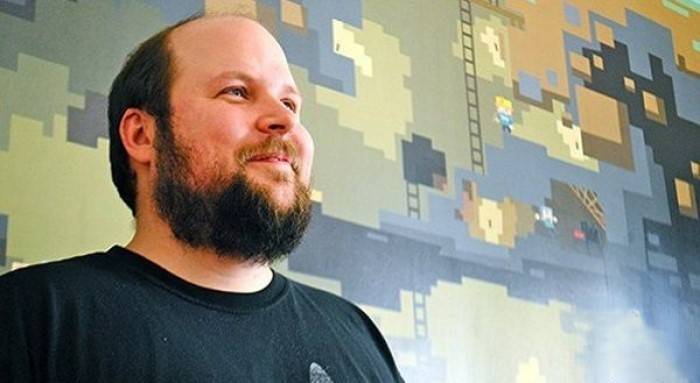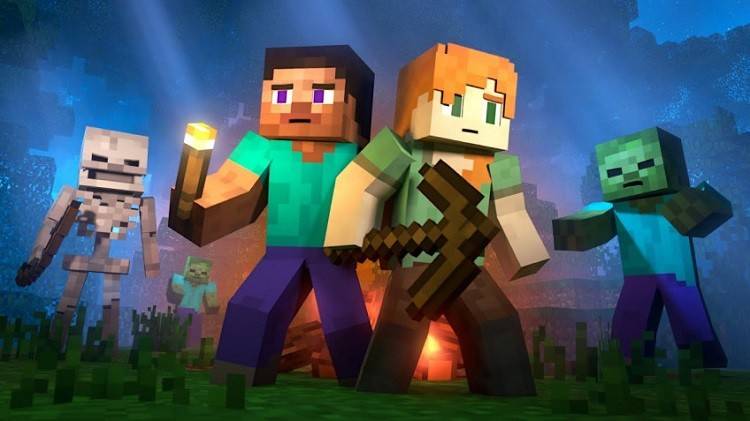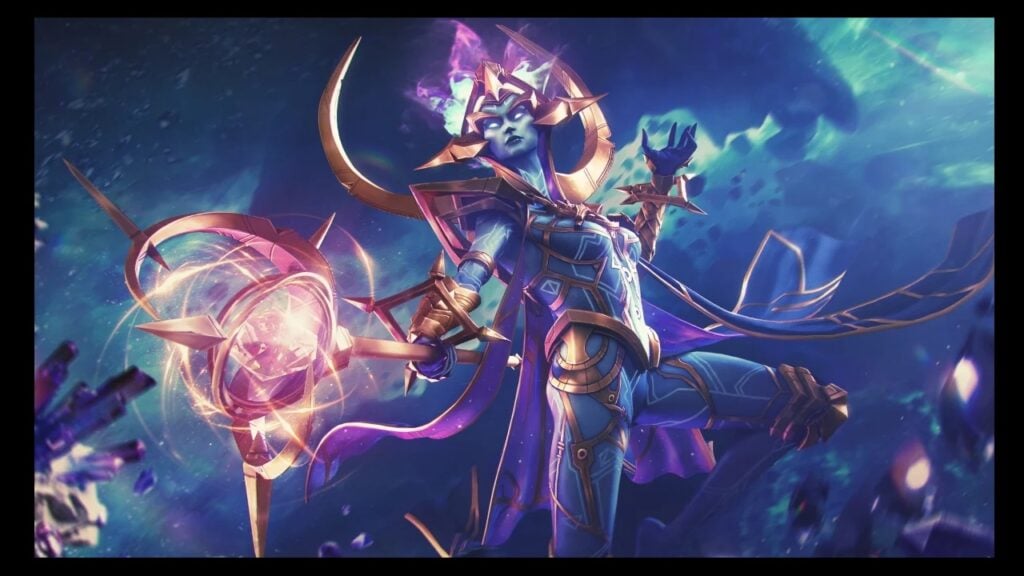Minecraft's Epic Saga: Decades of Adventure Unveiled
Minecraft: From Humble Beginnings to Global Phenomenon
Minecraft's journey to becoming a globally recognized video game phenomenon is a compelling story. Born in 2009 from the mind of Markus "Notch" Persson, its success wasn't guaranteed. This article details the evolution of Minecraft, from its initial conception to its current status as a cultural icon that reshaped the gaming landscape.
Table of Contents
- Initial Concept and First Release
- Building a Dedicated Player Base
- Official Launch and Worldwide Triumph
- Minecraft Versions Across Platforms
Initial Concept and First Release
 Image: apkpure.cfd
Image: apkpure.cfd
Developed in Sweden by Markus Persson, Minecraft drew inspiration from titles like Dwarf Fortress, Dungeon Keeper, and Infiniminer. Persson aimed to create a game emphasizing freedom of building and exploration. The alpha version debuted on May 17, 2009, a lightweight pixelated sandbox experience launched via an official game launcher. Its intuitive building mechanics quickly captivated players, laying the foundation for its future success.
Building a Dedicated Player Base
 Image: miastogier.pl
Image: miastogier.pl
Word-of-mouth marketing and online player communities fueled Minecraft's rapid growth. Transitioning to beta in 2010, Persson established Mojang Studios to fully dedicate himself to the project. Minecraft's unique gameplay, offering limitless creative potential, resonated deeply with players. The ability to construct anything from homes to replicas of famous landmarks, coupled with the introduction of Redstone (allowing complex mechanisms), proved revolutionary in the gaming world.
Official Launch and Worldwide Triumph
 Image: minecraft.net
Image: minecraft.net
The official release of Minecraft 1.0 on November 18, 2011, solidified its place in gaming history. Millions of players already comprised a thriving community, creating modifications, custom maps, and even educational projects. Expanding to consoles like the Xbox 360 and PlayStation 3 in 2012 further broadened its appeal, attracting a vast audience of children and teenagers who embraced its creative and educational aspects.
Minecraft Versions Across Platforms
 Image: aparat.com
Image: aparat.com
The following table summarizes key Minecraft versions released after the initial launch:
| Version Name | Description |
| Minecraft Classic | The original free version. |
| Minecraft: Java Edition | Initially lacked cross-platform play; later integrated Bedrock Edition. |
| Minecraft: Bedrock Edition | Enabled cross-platform play with other Bedrock versions; PC version includes Java. |
| Minecraft mobile | Cross-platform with other Bedrock versions. |
| Minecraft for Chromebook | Chromebook-specific version. |
| Minecraft for Nintendo Switch | Includes the Super Mario Mash-up pack. |
| Minecraft for PlayStation | Cross-platform with other Bedrock versions. |
| Minecraft for Xbox One | Partially Bedrock; no further updates. |
| Minecraft for Xbox 360 | Support ended after the Aquatic Update. |
| Minecraft for PS4 | Partially Bedrock; no further updates. |
| Minecraft for PS3 | Support ended. |
| Minecraft for PlayStation Vita | Support ended. |
| Minecraft for Wii U | Offered off-screen play. |
| Minecraft: New Nintendo 3DS Edition | Support ended. |
| Minecraft for China | China-exclusive version. |
| Minecraft Education | Educational version used in schools and educational settings. |
| Minecraft: PI Edition | Educational version for Raspberry Pi. |
Conclusion
Minecraft's enduring legacy extends far beyond the game itself. It's a vibrant ecosystem encompassing communities, online content, merchandise, and competitive events. Continuous updates introduce new biomes, characters, and features, ensuring its continued relevance and popularity. Minecraft's story is a testament to the power of creative freedom and the enduring appeal of a truly innovative game.
-
 Jan 27,25Roblox: Bike Obby Codes (January 2025) Bike Obby: Unlock Awesome Rewards with These Roblox Codes! Bike Obby, the Roblox cycling obstacle course, lets you earn in-game currency to upgrade your bike, buy boosters, and customize your ride. Mastering the various tracks requires a top-tier bike, and thankfully, these Bike Obby codes deliver
Jan 27,25Roblox: Bike Obby Codes (January 2025) Bike Obby: Unlock Awesome Rewards with These Roblox Codes! Bike Obby, the Roblox cycling obstacle course, lets you earn in-game currency to upgrade your bike, buy boosters, and customize your ride. Mastering the various tracks requires a top-tier bike, and thankfully, these Bike Obby codes deliver -
 Feb 20,25Where to Preorder the Samsung Galaxy S25 and S25 Ultra Smartphones Samsung's Galaxy S25 Series: A Deep Dive into the 2025 Lineup Samsung unveiled its highly anticipated Galaxy S25 series at this year's Unpacked event. The lineup features three models: the Galaxy S25, S25+, and S25 Ultra. Preorders are open now, with shipping commencing February 7th. Samsung's web
Feb 20,25Where to Preorder the Samsung Galaxy S25 and S25 Ultra Smartphones Samsung's Galaxy S25 Series: A Deep Dive into the 2025 Lineup Samsung unveiled its highly anticipated Galaxy S25 series at this year's Unpacked event. The lineup features three models: the Galaxy S25, S25+, and S25 Ultra. Preorders are open now, with shipping commencing February 7th. Samsung's web -
 Jul 02,22Isophyne Debuts as Original Character in Marvel Contest of Champions Kabam introduces a brand-new original character to Marvel Contest of Champions: Isophyne. This unique champion, a fresh creation from Kabam's developers, boasts a striking design reminiscent of the film Avatar, incorporating copper-toned metallic accents. Isophyne's Role in the Contest Isophyne ent
Jul 02,22Isophyne Debuts as Original Character in Marvel Contest of Champions Kabam introduces a brand-new original character to Marvel Contest of Champions: Isophyne. This unique champion, a fresh creation from Kabam's developers, boasts a striking design reminiscent of the film Avatar, incorporating copper-toned metallic accents. Isophyne's Role in the Contest Isophyne ent -
 Jan 11,25Jujutsu Kaisen Phantom Parade: Tier List Revealed This Jujutsu Kaisen Phantom Parade tier list helps free-to-play players prioritize character acquisition. Note that this ranking is subject to change with game updates. Tier List: Tier Characters S Satoru Gojo (The Strongest), Nobara Kugisaki (Girl of Steel), Yuta Okkotsu (Lend Me Your Stren
Jan 11,25Jujutsu Kaisen Phantom Parade: Tier List Revealed This Jujutsu Kaisen Phantom Parade tier list helps free-to-play players prioritize character acquisition. Note that this ranking is subject to change with game updates. Tier List: Tier Characters S Satoru Gojo (The Strongest), Nobara Kugisaki (Girl of Steel), Yuta Okkotsu (Lend Me Your Stren
